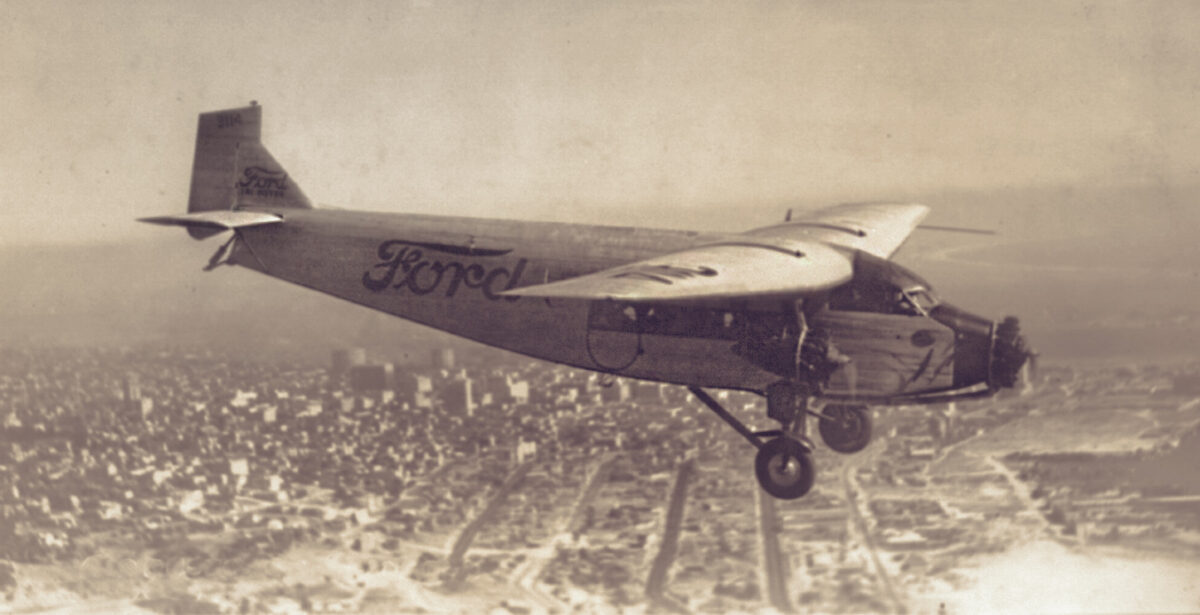Here’s an image of a Ford Tri-Motor in flight that was taken sometime in the late 1920s. It might look like an antique to today’s eyes, but this was taken when the Tri-Motor was the latest in aviation technology. Automaker Henry Ford and the Tri-Motor entered the aviation field through the efforts of one William Stout, who had designed and built several unsuccessful airplanes. Ford bought out Stout and got engineer William Mayo started to build on Stout’s work to create a modern passenger airplane. Inspired by the Fokker F.VII and the Junkers F13, Mayo came up with the Ford Tri-Motor. It was powered by three 300-hp Wright Whirlwind engines and had a corrugated aluminum skin, the strongest possibility for an all-metal airplane at the time. The Tri-Motor first flew in 1926 and Ford offered it to potential airlines for $42,000.
The Wright engines made sure passengers would experience ear-punishing flights, with the din increased by the sound of the external control cables slapping against the corrugated skin. In 1929, when Transcontinental Air Transport began offering the cross-country trips that gave the airline its name, the journeys lasted 51 hours and included a combination of Tri-Motor hops and train travel. A one-way ticket cost $338 in 1929 dollars (around $4,600 in today’s money). The Fort Tri-Motor was tough — but apparently, so were its passengers. You can read more about the Ford Tri-Motor here.
historynet magazines
Our 9 best-selling history titles feature in-depth storytelling and iconic imagery to engage and inform on the people, the wars, and the events that shaped America and the world.


